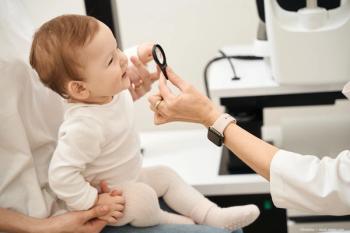
Cerebral damage biggest visual risk for preemies
Cerebral damage, not retinopathy of prematurity (ROP), may be the primary risk factor for visual impairment in preschool children who were born extremely prematurely, according to a Danish study published online in the Archives of Ophthalmology.
Copenhagen, Denmark-Cerebral damage, not retinopathy of prematurity (ROP), may be the primary risk factor for visual impairment in preschool children who were born extremely prematurely, according to a Danish study published online in the Archives of Ophthalmology.
The study compared 178 extremely pre-term children (gestational age of less than 26 weeks) and 56 term-born children (gestational age: 37 to 42 weeks). The children were aged approximately 4 years when they were examined for the study. All of the children were evaluated for the presence of global developmental deficits, which is an indicator of cerebral damage, as well as visual acuity, foveal sequelae, and maximum ROP stage.
The researchers found cerebral damage and ROP to be independent risk factors for extremely premature children; several stepwise multiple logistic regression analyses indicated that cerebral damage was the primary risk factor.
“This raises concerns that, in the current clinical ophthalmologic setting, ROP sequelae are given too much importance and cerebral damage is given too little importance when attributing the cause of visual impairment,” the authors wrote. “The clinical implications for these results should be that pediatric ophthalmologists and pediatricians look beyond ROP and consider cerebral damage in all premature infants, even in cases in which blindness or visual impairment may be explained by the current ROP sequelae.”
The lead author of the study was Carina Slidsborg, MD, of Copenhagen University Hospital.
For more articles in this issue of Ophthalmology Times eReport,
Newsletter
Don’t miss out—get Ophthalmology Times updates on the latest clinical advancements and expert interviews, straight to your inbox.








































